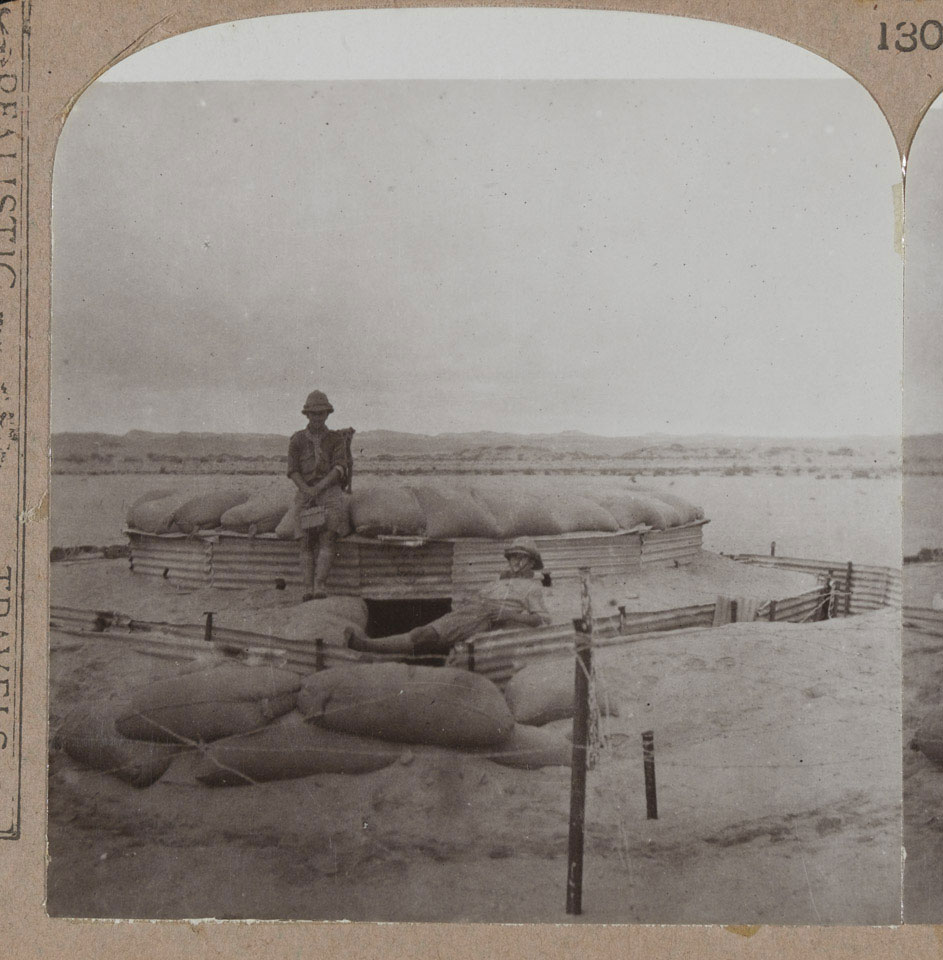
Online Collection
« Prev - 1 of 1 results - Next »
'A unique sand block-house, the only means of fortification in the deserts of South-West Africa', 1915
Stereoscopic photograph, World War One, South West Africa, 1915.
South African troops had been mobilised along the border of German South-West Africa (now Namibia) in August 1914 and the port of Lüderitz had been occupied, but the Boer Revolt delayed further operations apart from skirmishes along the frontier. In March 1915, over 60,000 South Africans, moving in four columns, finally began the occupation of German territory.
General Louis Botha commanded the force that occupied Walvis Bay and Swakopmund in the north and encountered some strong resistance, as well as being delayed by mines and water shortages caused by poisoned wells. The capital, Windhoek, was occupied on 12 May, by which time most of the country had been conquered. The Germans were gradually squeezed into the north-west corner of the territory. Defeated at Otavi on 1 July, they finally surrendered at Khorab on 9 July 1915.
From a collection of 96 stereoscopic photographs entitled 'The Great War'.
NAM Accession Number
NAM. 1972-08-67-2-130
Copyright/Ownership
National Army Museum, Out of Copyright
Location
National Army Museum, Study collection
Object URL
https://collection.nam.ac.uk/detail.php?acc=1972-08-67-2-130

